#Julie Higginson
Explore tagged Tumblr posts
Text
BLACK DARUMA POV doll horror - trailer and on VOD
Black Daruma is a 2024 horror film shot in POV that injects dark humour into the doll subgenre with an inventive twist. Black Daruma follows Ryan, a down-on-his-luck man in his thirties. He seeks a life change and purchases a Japanese lucky “Daruma” doll. However, the doll brings anything but good fortune, twisting Ryan’s life into a hilarious and horrifying mess. Co-director Fionn Watts…
#2024#Black Daruma#David Castleford#Fionn Watts#Julie Higginson#Louise O’Leary#POV doll horror#Richard Galloway#Ross Marshall#Toby Watts#trailer
0 notes
Text
2023 Master List


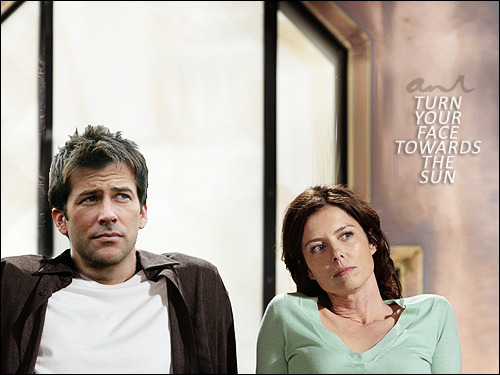



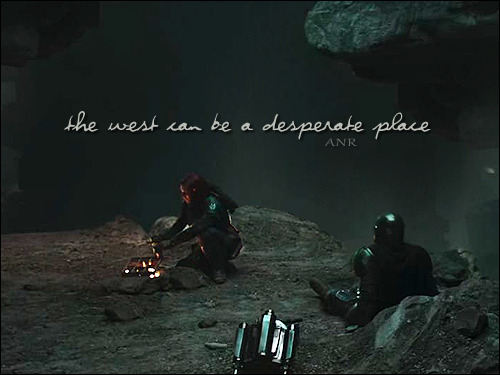


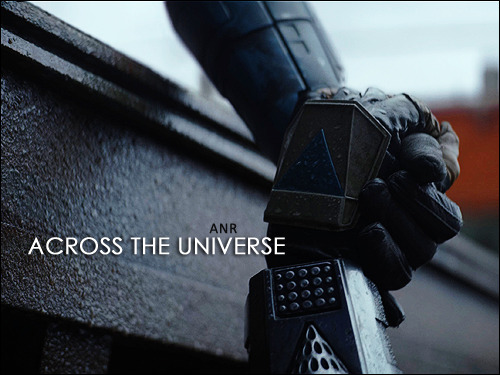


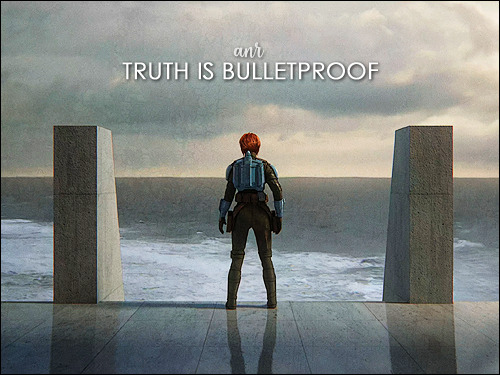



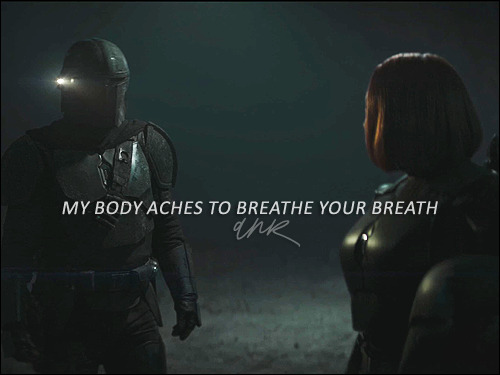




Holding Pattern It's similar, this grief. Stargate SG-1. Sam Carter/Jack O'Neill. General Audiences. January 2023.
First Things First "Not like this," she says, "not here." She runs. House of the Dragon. Daemon Targaryen/Rhaenyra Targaryen. Mature. February 2023.
Turn Your Face Towards the Sun She hadn't realised how much she was missing the ocean. Stargate Atlantis. John Sheppard/Elizabeth Weir. Explicit. April 2023.
Fade the Line By the time they've made it out of the detention block and down to the docking bay, she can hardly keep her feet under her. The Mandalorian. Din Djarin/Bo-Katan Kryze. Teen And Up Audiences. May 2023.
All of This Dust He takes the pearls back in an alley in Paris, his fingers skimming the lines of her shoulder, her neck. — Bruce and Selina and the journey from Gotham to Florence. Batman (Movies - Nolan). Selina Kyle/Bruce Wayne. Teen And Up Audiences. May 2023.
Slipping in Between She can't hold hands with her commanding officer, not even when his palm feels amazing against hers. (aka, Five times Sam and Jack hold hands in season four.) Stargate SG-1. Sam Carter/Jack O'Neill. Teen And Up Audiences. June 2023.
The West Can Be a Desperate Place He stops breathing sometime in the middle of the night, the familiar pattern stuttering once, twice, and then simply gone. The silence is deafening. The Mandalorian. Din Djarin/Bo-Katan Kryze. Teen And Up Audiences. June 2023.
The Edge of the Night The bond flickers -- his form appearing in the bed beside her like an insubstantial holo -- and fades. (aka, Five times Rey fantasizes about Ben, and one time it's not just a fantasy.) Star Wars Sequel Trilogy. Rey/Ben Solo | Kylo Ren. Explicit. June 2023.
Darkest Before the Dawn She doesn't want this to be something that hurts. (aka, Five times Ripley dreams about the aliens, and one time she doesn't.) Aliens. Dwayne Hicks/Ellen Ripley. Teen And Up Audiences. July 2023.
Across the Universe She loosens her grip so he can pull away if he wants to. He doesn't. (aka, Five times Bo-Katan and Din touch.) The Mandalorian. Din Djarin/Bo-Katan Kryze. Explicit. August 2023.
Anywhere Else Is Hollow She is tired; so very, very tired of saying no to herself. (aka, Five times Obi-Wan and Padme have sex.) Star Wars Prequel Trilogy. Padmé Amidala/Obi-Wan Kenobi. Explicit. September 2023.
Another Side of Time She pushes forward, her leg sliding over his as she tumbles him onto his back. She kneels astride him and tugs on his hair until his throat is bared. He swallows. "For someone so usually dismissive of titles," she says softly, "you seem rather obsessed with mine." Game of Thrones. Jaime Lannister/Brienne of Tarth. Explicit. September 2023.
Truth is Bulletproof It's one thing for her to want something she can't have -- she's been doing that her entire life -- but it's another thing entirely to have it reciprocated. The Mandalorian. Din Djarin/Bo-Katan Kryze. Mature. September 2023.
Keep Your Brittle Heart Warm The Games might be over but Haymitch is still here, and so are his memories. The Hunger Games. Haymitch Abernathy/Effie Trinket. Teen And Up Audiences. October 2023.
Look at Your Reflection Jon returns on the eve of spring, his cloak still white with snow. Game of Thrones. Jon Snow/Sansa Stark. Teen And Up Audiences. October 2023.
My Body Aches to Breathe Your Breath This is probably the least advised thing she's done. (aka, Three times Bo-Katan and Din have sex.) The Mandalorian. Din Djarin/Bo-Katan Kryze. Explicit. October 2023.
Let Everything Slide The kiss goes for much longer than is probably wise. (aka, Five times John and Elizabeth kiss.) Stargate Atlantis. John Sheppard/Elizabeth Weir. Teen And Up Audiences. October 2023.
Hearts Balanced on a Razor Blade The worst part is: she likes him. (aka, Five times Torri and Joe made a promise.) Stargate Atlantis RPF. Joe Flanigan/Torri Higginson. Teen And Up Audiences. December 2023.
Twinkle, Twinkle, Little Star Everything after the convention is a blur. Galaxy Quest. Gwen DeMarco/Jason Nesmith. Teen And Up Audiences. December 2023.
Hold Your Breath Captain Hernandez does agree to his request to transfer back to the Enterprise, but holds him first to his promise to get the Columbia's engines tuned right before their first six months is done. (aka, Five times Trip and T'Pol communicate telepathically.) Star Trek: Enterprise. T'Pol/Charles "Trip" Tucker III. Teen And Up Audiences. December 2023.
#fanfic#fic#fanfic by anr#anretc#stargate sg1#house of the dragon#stargate: atlantis#batman#star wars#the mandalorian#prequel trilogy#sequel trilogy#stargate: atlantis rpf#the hunger games#game of thrones#galaxy quest#star trek: enterprise#alien: quadrilogy
7 notes
·
View notes
Text
Good morning. 🦋🦋🦋
29 July 2024

‘Ode to a Butterfly’
"Thou spark of life that wavest wings of gold, Thou songless wanderer mid the songful birds, With Nature’s secrets in thy tints unrolled Through gorgeous cipher, past the reach of words, Yet dear to every child In glad pursuit beguiled, Living his unspoiled days mid flowers and flocks and herds!" - Thomas Wentworth Higginson
Hmmm - do you ever accidently paste when you meant to copy. That is annoying at best and a disaster at worst. However, it is usually not as bad as forgetting to back up your work after typing a couple of pages and then your computer has a hiccup. I used to do some light programming; I know of what I speak. My motto was always backup and backup the backup. Truely, I don't follow my own advice at home as diligently as I did a work.
2 notes
·
View notes
Text
20k Leagues under the sea, Jules Verne
PART ONE
CHAPTER I
A SHIFTING REEF
The year 1866 was signalised by a remarkable incident, a mysterious and puzzling phenomenon, which doubtless no one has yet forgotten. Not to mention rumours which agitated the maritime population and excited the public mind, even in the interior of continents, seafaring men were particularly excited. Merchants, common sailors, captains of vessels, skippers, both of Europe and America, naval officers of all countries, and the Governments of several states on the two continents, were deeply interested in the matter.
For some time past, vessels had been met by “an enormous thing,” a long object, spindle-shaped, occasionally phosphorescent, and infinitely larger and more rapid in its movements than a whale.
The facts relating to this apparition (entered in various log-books) agreed in most respects as to the shape of the object or creature in question, the untiring rapidity of its movements, its surprising power of locomotion, and the peculiar life with which it seemed endowed. If it was a cetacean, it surpassed in size all those hitherto classified in science. Taking into consideration the mean of observations made at divers times,—rejecting the timid estimate of those who assigned to this object a length of two hundred feet, equally with the exaggerated opinions which set it down as a mile in width and three in length,—we might fairly conclude that this mysterious being surpassed greatly all dimensions admitted by the ichthyologists of the day, if it existed at all. And that it did exist was an undeniable fact; and, with that tendency which disposes the human mind in favour of the marvellous, we can understand the excitement produced in the entire world by this supernatural apparition. As to classing it in the list of fables, the idea was out of the question.
On the 20th of July, 1866, the steamer Governor Higginson, of the Calcutta and Burnach Steam Navigation Company, had met this moving mass five miles off the east coast of Australia. Captain Baker thought at first that he was in the presence of an unknown sandbank; he even prepared to determine its exact position, when two columns of water, projected by the inexplicable object, shot with a hissing noise a hundred and fifty feet up into the air. Now, unless the sandbank had been submitted to the intermittent eruption of a geyser, the Governor Higginson had to do neither more nor less than with an aquatic mammal, unknown till then, which threw up from its blow-holes columns of water mixed with air and vapour.
Similar facts were observed on the 23rd of July in the same year, in the Pacific Ocean, by the Columbus, of the West India and Pacific Steam Navigation Company. But this extraordinary cetaceous creature could transport itself from one place to another with surprising velocity; as, in an interval of three days, the Governor Higginson and the Columbus had observed it at two different points of the chart, separated by a distance of more than seven hundred nautical leagues.
Fifteen days later, two thousand miles farther off, the Helvetia, of the Compagnie-Nationale, and the Shannon, of the Royal Mail Steamship Company, sailing to windward in that portion of the Atlantic lying between the United States and Europe, respectively signalled the monster to each other in 42° 15′ N. lat. and 60° 35′ W. long. In these simultaneous observations they thought themselves justified in estimating the minimum length of the mammal at more than three hundred and fifty feet, as the Shannon and Helvetia were of smaller dimensions than it, though they measured three hundred feet over all.
Now the largest whales, those which frequent those parts of the sea round the Aleutian, Kulammak, and Umgullich islands, have never exceeded the length of sixty yards, if they attain that.
These reports arriving one after the other, with fresh observations made on board the transatlantic ship Pereire, a collision which occurred between the Etna of the Inman line and the monster, a procès verbal directed by the officers of the French frigate Normandie, a very accurate survey made by the staff of Commodore Fitz-James on board the Lord Clyde, greatly influenced public opinion. Light-thinking people jested upon the phenomenon, but grave practical countries, such as England, America, and Germany, treated the matter more seriously.
In every place of great resort the monster was the fashion. They sang of it in the cafés, ridiculed it in the papers, and represented it on the stage. All kinds of stories were circulated regarding it. There appeared in the papers caricatures of every gigantic and imaginary creature, from the white whale, the terrible “Moby Dick” of hyperborean regions, to the immense kraken whose tentacles could entangle a ship of five hundred tons, and hurry it into the abyss of the ocean. The legends of ancient times were even resuscitated, and the opinions of Aristotle and Pliny revived, who admitted the existence of these monsters, as well as the Norwegian tales of Bishop Pontoppidan, the accounts of Paul Heggede, and, last of all, the reports of Mr. Harrington (whose good faith no one could suspect), who affirmed that, being on board the Castillan, in 1857, he had seen this enormous serpent, which had never until that time frequented any other seas but those of the ancient “Constitutionnel.”
Then burst forth the interminable controversy between the credulous and the incredulous in the societies of savants and the scientific journals. “The question of the monster” inflamed all minds. Editors of scientific journals, quarrelling with believers in the supernatural, spilled seas of ink during this memorable campaign, some even drawing blood; for, from the sea-serpent they came to direct personalities.
For six months war was waged with various fortune in the leading articles of the Geographical Institution of Brazil, the Royal Academy of Science of Berlin, the British Association, the Smithsonian Institution of Washington, in the discussions of the “Indian Archipelago,” of the Cosmos of the Abbé Moigno, in the Mittheilungen of Petermann, in the scientific chronicles of the great journals of France and other countries. The cheaper journals replied keenly and with inexhaustible zest. These satirical writers parodied a remark of Linnæus, quoted by the adversaries of the monster, maintaining “that nature did not make fools,” and adjured their contemporaries not to give the lie to nature, by admitting the existence of krakens, sea-serpents, “Moby Dicks,” and other lucubrations of delirious sailors. At length an article in a well-known satirical journal by a favourite contributor, the chief of the staff, settled the monster, like Hippolytus, giving it the death-blow amidst an universal burst of laughter. Wit had conquered science.
During the first months of the year 1867 the question seemed buried, never to revive, when new facts were brought before the public. It was then no longer a scientific problem to be solved, but a real danger seriously to be avoided. The question took quite another shape. The monster became a small island, a rock, a reef, but a reef of indefinite and shifting proportions.
On the 5th of March, 1867, the Moravian, of the Montreal Ocean Company, finding herself during the night in 27° 30′ lat. and 72° 15′ long., struck on her starboard quarter a rock, marked in no chart for that part of the sea. Under the combined efforts of the wind and its four hundred horse-power, it was going at the rate of thirteen knots. Had it not been for the superior strength of the hull of the Moravian, she would have been broken by the shock and gone down with the 237 passengers she was bringing home from Canada.
The accident happened about five o’clock in the morning, as the day was breaking. The officers of the quarter-deck hurried to the after-part of the vessel. They examined the sea with the most scrupulous attention. They saw nothing but a strong eddy about three cables’ length distant, as if the surface had been violently agitated. The bearings of the place were taken exactly, and the Moravian continued its route without apparent damage. Had it struck on a submerged rock, or on an enormous wreck? they could not tell; but on examination of the ship’s bottom when undergoing repairs, it was found that part of her keel was broken.
This fact, so grave in itself, might perhaps have been forgotten like many others if, three weeks after, it had not been re-enacted under similar circumstances. But, thanks to the nationality of the victim of the shock, thanks to the reputation of the company to which the vessel belonged, the circumstance became extensively circulated.
The 13th of April, 1867, the sea being beautiful, the breeze favourable, the Scotia, of the Cunard Company’s line, found herself in 15° 12′ long. and 45° 37′ lat. She was going at the speed of thirteen knots and a half.
At seventeen minutes past four in the afternoon, whilst the passengers were assembled at lunch in the great saloon, a slight shock was felt on the hull of the Scotia, on her quarter, a little aft of the port-paddle.
The Scotia had not struck, but she had been struck, and seemingly by something rather sharp and penetrating than blunt. The shock had been so slight that no one had been alarmed, had it not been for the shouts of the carpenter’s watch, who rushed on to the bridge, exclaiming, “We are sinking! we are sinking!” At first the passengers were much frightened, but Captain Anderson hastened to reassure them. The danger could not be imminent. The Scotia, divided into seven compartments by strong partitions, could brave with impunity any leak. Captain Anderson went down immediately into the hold. He found that the sea was pouring into the fifth compartment; and the rapidity of the influx proved that the force of the water was considerable. Fortunately this compartment did not hold the boilers, or the fires would have been immediately extinguished. Captain Anderson ordered the engines to be stopped at once, and one of the men went down to ascertain the extent of the injury. Some minutes afterwards they discovered the existence of a large hole, of two yards in diameter, in the ship’s bottom. Such a leak could not be stopped; and the Scotia, her paddles half submerged, was obliged to continue her course. She was then three hundred miles from Cape Clear, and after three days’ delay, which caused great uneasiness in Liverpool, she entered the basin of the company.
The engineers visited the Scotia, which was put in dry dock. They could scarcely believe it possible; at two yards and a half below water-mark was a regular rent, in the form of an isosceles triangle. The broken place in the iron plates was so perfectly defined that it could not have been more neatly done by a punch. It was clear, then, that the instrument producing the perforation was not of a common stamp; and after having been driven with prodigious strength, and piercing an iron plate 1-3/8 inches thick, had withdrawn itself by a retrograde motion truly inexplicable.
Such was the last fact, which resulted in exciting once more the torrent of public opinion. From this moment all unlucky casualties which could not be otherwise accounted for were put down to the monster. Upon this imaginary creature rested the responsibility of all these shipwrecks, which unfortunately were considerable; for of three thousand ships whose loss was annually recorded at Lloyd’s, the number of sailing and steam ships supposed to be totally lost, from the absence of all news, amounted to not less than two hundred!
Now, it was the “monster” who, justly or unjustly, was accused of their disappearance, and, thanks to it, communication between the different continents became more and more dangerous. The public demanded peremptorily that the seas should at any price be relieved from this formidable cetacean.
CHAPTER II
PRO AND CON
At the period when these events took place, I had just returned from a scientific research in the disagreeable territory of Nebraska, in the United States. In virtue of my office as Assistant Professor in the Museum of Natural History in Paris, the French Government had attached me to that expedition. After six months in Nebraska, I arrived in New York towards the end of March, laden with a precious collection. My departure for France was fixed for the first days in May. Meanwhile, I was occupying myself in classifying my mineralogical, botanical, and zoological riches, when the accident happened to the Scotia.
I was perfectly up in the subject which was the question of the day. How could I be otherwise? I had read and re-read all the American and European papers without being any nearer a conclusion. This mystery puzzled me. Under the impossibility of forming an opinion, I jumped from one extreme to the other. That there really was something could not be doubted, and the incredulous were invited to put their finger on the wound of the Scotia.
On my arrival at New York the question was at its height. The hypothesis of the floating island, and the unapproachable sandbank, supported by minds little competent to form a judgment, was abandoned. And, indeed, unless this shoal had a machine in its stomach, how could it change its position with such astonishing rapidity?
From the same cause, the idea of a floating hull of an enormous wreck was given up.
There remained then only two possible solutions of the question, which created two distinct parties: on one side, those who were for a monster of colossal strength; on the other, those who were for a submarine vessel of enormous motive power.
But this last hypothesis, plausible as it was, could not stand against inquiries made in both worlds. That a private gentleman should have such a machine at his command was not likely. Where, when, and how was it built? and how could its construction have been kept secret? Certainly a Government might possess such a destructive machine. And in these disastrous times, when the ingenuity of man has multiplied the power of weapons of war, it was possible that, without the knowledge of others, a state might try to work such a formidable engine. After the chassepots came the torpedoes, after the torpedoes the submarine rams, then—the reaction. At least, I hope so.
But the hypothesis of a war machine fell before the declaration of Governments. As public interest was in question, and transatlantic communications suffered, their veracity could not be doubted. But, how admit that the construction of this submarine boat had escaped the public eye? For a private gentleman to keep the secret under such circumstances would be very difficult, and for a state whose every act is persistently watched by powerful rivals, certainly impossible.
After inquiries made in England, France, Russia, Prussia, Spain, Italy, and America, even in Turkey, the hypothesis of a submarine monitor was definitely rejected.
Upon my arrival in New York several persons did me the honour of consulting me on the phenomenon in question. I had published in France a work in quarto, in two volumes, entitled “Mysteries of the Great Submarine Grounds.” This book, highly approved of in the learned world, gained for me a special reputation in this rather obscure branch of Natural History. My advice was asked. As long as I could deny the reality of the fact, I confined myself to a decided negative. But soon, finding myself driven into a corner, I was obliged to explain myself categorically. And even “the Honourable Pierre Aronnax, Professor in the Museum of Paris,” was called upon by the New York Herald to express a definite opinion of some sort. I did something. I spoke, for want of power to hold my tongue. I discussed the question in all its forms, politically and scientifically; and I give here an extract from a carefully-studied article which I published in the number of the 30th of April. It ran as follows:—
“After examining one by one the different hypotheses, rejecting all other suggestions, it becomes necessary to admit the existence of a marine animal of enormous power.
“The great depths of the ocean are entirely unknown to us. Soundings cannot reach them. What passes in those remote depths—what beings live, or can live, twelve or fifteen miles beneath the surface of the waters—what is the organisation of these animals, we can scarcely conjecture. However, the solution of the problem submitted to me may modify the form of the dilemma. Either we do know all the varieties of beings which people our planet, or we do not. If we do not know them all—if Nature has still secrets in ichthyology for us, nothing is more conformable to reason than to admit the existence of fishes, or cetaceans of other kinds, or even of new species, of an organisation formed to inhabit the strata inaccessible to soundings, and which an accident of some sort, either fatastical or capricious, has brought at long intervals to the upper level of the ocean.
“If, on the contrary, we do know all living kinds, we must necessarily seek for the animal in question amongst those marine beings already classed; and, in that case, I should be disposed to admit the existence of a gigantic narwhal.
“The common narwhal, or unicorn of the sea, often attains a length of sixty feet. Increase its size fivefold or tenfold, give it strength proportionate to its size, lengthen its destructive weapons, and you obtain the animal required. It will have the proportions determined by the officers of the Shannon, the instrument required by the perforation of the Scotia, and the power necessary to pierce the hull of the steamer.
“Indeed, the narwhal is armed with a sort of ivory sword, a halberd, according to the expression of certain naturalists. The principal tusk has the hardness of steel. Some of these tusks have been found buried in the bodies of whales, which the unicorn always attacks with success. Others have been drawn out, not without trouble, from the bottoms of ships, which they had pierced through and through, as a gimlet pierces a barrel. The Museum of the Faculty of Medicine of Paris possesses one of these defensive weapons, two yards and a quarter in length, and fifteen inches in diameter at the base.
“Very well! suppose this weapon to be six times stronger and the animal ten times more powerful; launch it at the rate of twenty miles an hour, and you obtain a shock capable of producing the catastrophe required. Until further information, therefore, I shall maintain it to be a sea-unicorn of colossal dimensions, armed not with a halberd, but with a real spur, as the armoured frigates, or the ‘rams’ of war, whose massiveness and motive power it would possess at the same time. Thus may this puzzling phenomenon be explained, unless there be something over and above all that one has ever conjectured, seen, perceived, or experienced; which is just within the bounds of possibility.”
These last words were cowardly on my part; but, up to a certain point, I wished to shelter my dignity as Professor, and not give too much cause for laughter to the Americans, who laugh well when they do laugh.
I reserved for myself a way of escape. In effect, however, I admitted the existence of the “monster.” My article was warmly discussed, which procured it a high reputation. It rallied round it a certain number of partisans. The solution it proposed gave, at least, full liberty to the imagination. The human mind delights in grand conceptions of supernatural beings. And the sea is precisely their best vehicle, the only medium through which these giants (against which terrestrial animals, such as elephants or rhinoceroses, are as nothing) can be produced or developed.
The industrial and commercial papers treated the question chiefly from this point of view. The Shipping and Mercantile Gazette, the Lloyd’s List, the Packet-Boat, and the Maritime and Colonial Review, all papers devoted to insurance companies which threatened to raise their rates of premium, were unanimous on this point. Public opinion had been pronounced. The United States were the first in the field; and in New York they made preparations for an expedition destined to pursue this narwhal. A frigate of great speed, the Abraham Lincoln, was put in commission as soon as possible. The arsenals were opened to Commander Farragut, who hastened the arming of his frigate; but, as it always happens, the moment it was decided to pursue the monster, the monster did not appear. For two months no one heard it spoken of. No ship met with it. It seemed as if this unicorn knew of the plots weaving around it. It had been so much talked of, even through the Atlantic cable, that jesters pretended that this slender fly had stopped a telegram on its passage and was making the most of it.
So when the frigate had been armed for a long campaign, and provided with formidable fishing apparatus, no one could tell what course to pursue. Impatience grew apace, when, on the 2nd of July, they learned that a steamer of the line of San Francisco, from California to Shanghai, had seen the animal three weeks before in the North Pacific Ocean. The excitement caused by this news was extreme. The ship was revictualled and well stocked with coal.
Three hours before the Abraham Lincoln left Brooklyn pier, I received a letter worded as follows:—
“To M. ARONNAX, Professor in the Museum of Paris, Fifth Avenue Hotel, New York.
“SIR,—If you will consent to join the Abraham Lincoln in this expedition, the Government of the United States will with pleasure see France represented in the enterprise. Commander Farragut has a cabin at your disposal.
“Very cordially yours,
“J.B. HOBSON,
“Secretary of Marine"
NEXT >>
5 notes
·
View notes
Text

Elizabeth Key Grinstead (Greenstead) (1630 – January 20, 1665) born in Warwick County, Virginia was one of the first African American people of the Thirteen Colonies to sue for freedom from slavery and win. She won her freedom and that of her infant son John Grinstead on July 21, 1656, in the colony of Virginia. She based her suit on the fact that her father was an Englishman who had acknowledged her and arranged her baptism as a Christian in the American branch of the Church of England. Based on these factors, her attorney and common-law husband, William Grinstead, argued successfully that she should be freed. The lawsuit was one of the earliest “freedom suits” by an African-descended person in the English colonies.
The Virginia House of Burgesses passed a law in 1662 establishing that the social status of children born in the colony would follow the social status of their respective mothers. Virginia and other colonies incorporated a principle known as partus sequitur ventrem or partus, relating to the chattel property.
Her mother was an enslaved African woman and her father was Thomas Key, an English planter and a member of the Virginia House of Burgesses, representing Warwick County.
Around 1636, in a civic case at Blunt Point court, Thomas Key was charged with fathering a mixed-race girl. Thomas Key took responsibility for her, arranging for her baptism in the established Church of England and supporting her financially. Sometime before he died in 1636, Thomas placed her in the custody of Humphrey Higginson by a nine-year indenture. Higginson, a wealthy planter who owned several plantations, was expected to act as her guardian until she reached the age of 15. Upon reaching age 15, she would be free.
She intended Higginson to act as her guardian but did not keep his commitment to take the girl with him if he returned to England. He transferred (or sold) her indenture to Col. John Mottram, the first Anglo-European settler in Northumberland County. About 1640, Mottram moved to the undeveloped county, taking her at age 10 with him as a servant. There is little record of her next 15 years. #africanhistory365 #africanexcellence
0 notes
Text
Julie Higginson
Julie Forhan Higginson DECEMBER 1, 1959 – MAY 1, 2023 IN THE CARE OF Robert Toale and Sons Funeral Home – Wiegand Chapem Julie Forhan Higginson, age 63, of Sarasota, Florida passed away on Monday, May 1, 2023 No services are scheduled at this time. Receive a notification when services are updated https://www.dignitymemorial.com/obituaries/sarasota-fl/julie-higginson-11275804
View On WordPress
0 notes
Text
August 1st Today is the first day of August. Sniff. July is over. I got up this morning at 6:30. I don’t know why. The dew was very thick and beautiful. All white. Now, however, the sun is out. The sky is blue. And it is going to be a beautiful day. [...]
August 1st Yesterday was not the first day of August. Today is. A free day. Bill and I tried to collaborate this morning but it didn’t work out. [...]
Aug. 3rd Actually I am not sure if today is the 3rd or not. It might be the 4th or the 5th. It really doesn’t matter. [...]

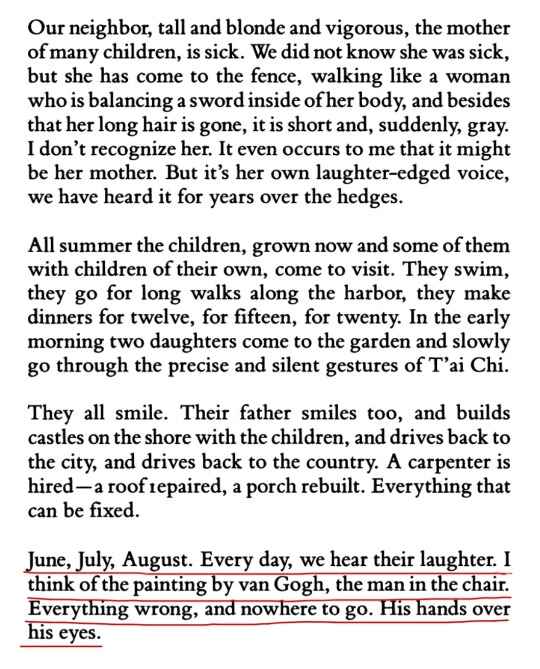


1. The poem present only in a letter Dickinson had sent to Higginson in August 1877, that Popova imagines to have been possibly written having witnessed the eclipse on September 29, 1875:
It sounded as if the streets were running— /And then—the streets stood still—/ Eclipse was all we could see at the Window/ And Awe—was all we could feel. / By and by—the boldest stole out of his Covert/ To see if Time was there/ Nature was in her Opal Apron—/ Mixing fresher Air.
2. Asaph Hall was about to give up his frustrating search for a Martian moon one August night in 1877, but his wife Angelina urged him on. He discovered Deimos (pic 1 below) the next night, and Phobos (pic 2 below) six nights after that. (x)
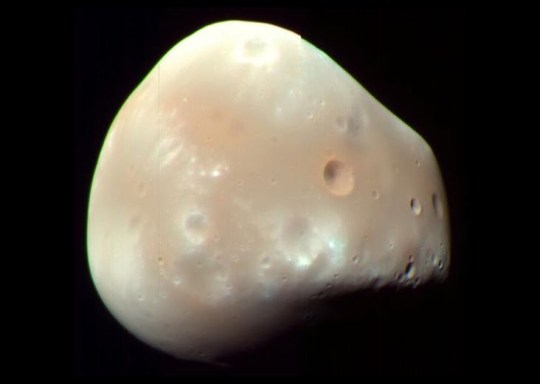



•••
Joe Brainard, Dairy 1969 | Virginia Woolf, Mrs Dalloway, 1925 | Mary Oliver, August, 1993 | Vincent van Gogh, Sorrowing Old Man (At Eternity's Gate), 1890 | Maria Popova, Figuring, 2019 | Ocean Vuong, Night Sky With Exit Wounds, 2016 | Taylor Swift, August, 2020
#joe brainard#writers diary#mrs dalloway#virginia woolf#mary oliver#august#vincent van gogh#at eternity's gate#maria popova#figuring#emily dickinson#eclipse#ocean vuoug#night sky with exit wounds#taylor swift#evermore#**#parallels
130 notes
·
View notes
Text
Exclusive first look at Rhys Darby in time-travel comedy Relax, I’m From the Future

Death, but his next project will find him moving from the world of pirates to the world of time travel for Relax, I’m From the Future. The sci-fi/comedy from Wango Films stars Darby as Casper, a charming, but embarrassingly underprepared time traveler who finds himself trapped in the past. Gabrielle Graham also stars as Holly, a jaded drifter who helps Casper exploit his trivial knowledge of the future for a series of quick payouts. Naturally, you can’t meddle with the future without facing a few consequences. The film will have its world premiere at the Fantasia Film Festival next week, and we’ve got an exclusive first look at the new festival poster and a still.

Relax, I’m From the Future was written and directed by Luke Higginson, based on his short film of the same name that premiered at the Toronto International Film Festival in 2013. “Relax, I’m From the Future puts a whole new spin on the time travel genre,” said Wango Films CEO Tim Doiron. “It’s clever and silly, hilarious, and poignant. Luke has brilliantly captured a much-needed dose of hope and laughter. Rhys and Gabrielle’s performances will blow your socks off.” Doiron also produced the film alongside James van der Woerd, and the pair will self-represent the film’s domestic sale.

The official synopsis for Relax, I’m From the Future:
Relax, I’m From the Future follows Casper (Rhys Darby), a charming but embarrassingly underprepared Time Traveler, now trapped in the past. When he befriends Holly (Gabrielle Graham), a jaded drifter, she helps him exploit his trivial knowledge of the future for a series of quick payouts, oblivious to the consequences they have set in motion. When tracked down by a more competent Time Traveler, Casper and Holly are forced to figure out what they mean to each other and whether the future they’ve threatened is even worth saving. Will they embrace their fate, or do they have the courage to change it?
The first season of Our Flag Means Death is currently streaming on HBO Max and the series has already been renewed for a second season. Relax, I’m From the Future will debut at the Fantasia Film Festival on July 20th.
Source: JoBlo
46 notes
·
View notes
Text
Classic ED - 2003 Debuts, Departures & Robert Sugden Monthly Appearance Counts

Classic ED is expected to begin airing 2003 episodes during the 1st full week of Dec-2022. Below are key character arrivals and departures. Also included now are the monthly episode counts for Robert (October apparently is a BIG month for him!).
Arrivals:
24-Jan-2003 - Jean Tate (Megan Pearson)
16-Feb-2003 - Dawn Woods (Julia Mallam)
17-Feb-2003 - Jean Hope (Julie Higginson)
10-Mar-2003 - Alastair Marsden (Danny Tennant), Elaine Marsden (Samantha McCarthy), Frances Marsden (Sandy Walsh), Paul Marsden (Matthew Booth), Ronnie Marsden (Ray Ashcroft), Siobhan Marsden (Abigail Fisher)
07-Jul-2003 - Shelly Williams (Carolyn Pickles)
30-Jul-2003 - Pearl Ladderbanks (Meg Johnson)
09-Oct-2003 - Darren ‘Daz’ Eden (Luke Tittensor)
19-Oct-2003 - TJ Woods (Connor Lee)
20-Nov-2003 - Simon Meredith (Dale Meeks)
17-Dec-2003 - Ethan Blake (Liam O’Brien)
24-Dec-2003 - Aaron Livesy (played by Danny Webb for 19 episodes through 2006)
Departures:
16-Apr-2003 - Jerry ‘Mack’ Mackinley
17-Sep-2003 - Chris Tate (killed off)
01-Oct-2003 - Ollie Reynolds
03-Dec-2003 - Ronnie Marsden
17-Dec-2003 - Alastair Marsden, Elaine Marsden, Frances Marsden
Robert Sugden Total Appearances: 121 (12th overall in episode count)
January 7, February 1, March 3
April 10, May 13, June 11
July 13, August 12, September 11
October 22, November 11, December 7
Previous arrivals and departures by year:
2002, 2001, 2000, 1999
2 notes
·
View notes
Text
Had a few people question me in DMs about what actor plays which role. Well first we have to separate book from script as Jane Campion often adds and changes her scripts from the original literary work. So some of the actors listed for the film are playing original characters added by Jane.
Let us look at the characters we know from the book, first the family:
Phil Burbank (Benedict Cumberbatch). George Burbank (Jesse Plemons). Rose Burbank (Kirsten Dunst). Old Lady or Mrs Burbank The Mother ( Frances Conway). Old Gent or Mr Burbank the Father (Peter Carroll). Peter, son of Rose ( Kodi Smit-McPhee).
Now the supporting characters who feature in the book:
Mrs Lewis housekeeper at the Burbank Ranch (Genevieve Lemon). Lola maid at Burbank Ranch (Thomasin McKenzie). Governor and wife ( Keith Carradine & Alison Bruce). Edward, Jeanne & son, Shoshone family (Adam Beach, Jacque Drew & Maeson Stone) Mrs Mueller, Peter’s landlady (Julie Forsyth). Rowdy group at The Inn. Consuela the Flapper (Ella Hope-Higginson) Undertaker ( Stephen Bain) Pianolla man ( Richard Faulkner) and a Dentist (yet unnamed). Itinerant ranch hands Theo ( Ramontay McConnell) and Angelo (David Denis).
This takes us to roles of Ranch Hands in the bunk house. I think Bill (Karl Willetts) could be one as could Stan (Eddie Campbell) but there will be more.
The added females to the cast list appears that Jane has added women to her script as there was a lack of them in the book. We have a Pearl, Libby, Sue-Ella and a Tanya.
Hope this helps orientate roles from the page to cast.
0 notes
Text
Crazy Pedro's Boss Opens New Taco and Tequila Restaurant in Withington

RAHUL SHARMA DEBT CONNECT IN MANCHESTER, UK, https://www.messengernewspapers.co.uk/news/7226047.altrincham-grammar-school-for-boys/
https://www.crunchbase.com/organization/rahul-sharma-d189
https://www.leicestermercury.co.uk/news/uk-world-news/you-been-down-ryanair-heres-1815654
https://neconnected.co.uk/newcastle-fintech-firm-acquires-rival/
A new late-night bar and restaurant is preparing to open its doors in Withington for the first time this week.
Southside will specialise in tequila and tacos, taking over the former Solomons Cafe Bar on Wilmslow Road.
The seating spaces inside have been extended and revamped ready to open to the public on Wednesday July 8.
It comes from former Solomons owners Rupert Cade and Rick McClean, who have teamed up with Crazy Pedro's boss Lyndon Higginson.
Higginson also owns Wolf At The Door in the Northern Quarter, which revamped its menu earlier this year from seasonal small plates to creative tacos.
In the Thomas Street venue, fillings range from cauliflower shawarma to jerk chicken.
Southside will have additional seating both in the downstairs area and outside on an open-air terrace.
Snippets posted on social media show a ceiling plastered in music posters, bright orange booths, and graffiti-style artwork.
Source: https://www.manchestereveningnews.co.uk/whats-on/food-drink-news/southside-withington-tacos-tequila-bar-18551503
#taco and tequila#restaurant#withington#boss#manchester#united kingdom#uk#hale#rahul sharma hale#rahul sharma manchester#rahul sharma debt connect#rahul sharma connected claims
1 note
·
View note
Quote
His Heart was pure and terrible and I think no other like it exists.
Emily Dickinson, in a Letter to T. W. Higginson, July 1874
14 notes
·
View notes
Text

Charlotte Forten Grimké (August 17, 1837 - July 23, 1914) grew up in a rich intellectual and activist environment. Born into a wealthy Black abolitionist family in Philadelphia, she became famous in her own right as a writer and poet. Her grandparents, James, Sr. and Charlotte Forten, hosted leading Black and white abolitionists into their homes regularly. James Forten was one of the wealthiest Blacks in Philadelphia, having amassed a fortune in the sail-making business. Her parents, Robert Bridges Forten and Mary Woods Forten, continued the family’s activist tradition as had her uncles and aunts, including Sarah, Harriet, and Margaretta Forten, who helped establish the bi-racial Philadelphia Female Anti-Slavery Society.
She spent much of her youth in Salem, Massachusetts. She attended the exclusively white Higginson Grammar School and the Normal School. Like many educated women of her generation, she became a teacher. In 1856, she began teaching at the Epes School in Salem to support herself, but a bout with tuberculosis led her to return to her family in Philadelphia.
Like her aunt Sarah Forten, she developed a passion for writing poetry, many of which focused on antislavery. During the Civil War, she wrote essays about her experience as a teacher among southern blacks. In 1862, she joined black and white northern women who journeyed to the Union-occupied coastal Sea Islands of South Carolina to teach formerly enslaved children. She published “Life on the Sea Islands” in The Atlantic Monthly about her work with the Sea Islands Mission.
The Fortens had maintained a long association with the abolitionist side of the Grimké family. She married Francis James Grimké (1878), 13 years her junior. Born enslaved, he was the half-brother of prominent white abolitionist sisters, Sarah and Angelina Grimké. After gaining his freedom once the war ended, he entered the Princeton Theological Seminary. They had one daughter who died in infancy. She became involved in missionary activities. They moved to DC, where he served as pastor of the Fifteenth Street Presbyterian Church. #africanhistory365 #africanexcellence
0 notes
Text
A diarly of witches

22, 1692. I prayd that God would pardon all my Sinfull Wanderings, and direct me for the future. True, Wm Huchins and several other interested persons there, in the affirmative. The season and manner of doing it, us such, that the Court of Oyer and Terminer count themselves thereby dismissed. 26, 1692. A Bill is sent in about calling a Fast, and Convocation of Ministers, that may be led in the right way as to the Witchcrafts. Told me of the womanís coming into his house last Sabbath-day sennight at Even. Danforth, and discoursed with Him about the Witchcraft thinks there cannot be a procedure in the Court except there be some better consent of Ministers and People. Matherís book, as to Cases of Conscience touching Witchcraft. years buried in the new burying place a very good, modest, humble, plain, liberal Matron. Stoughton went away early in the morn so that I saw him not. Has been a plentiful Rain, blessed be God. Stoughton went away and left us, it began to rain and was very dark, so that getting some way beyond the fortification, was fain to come back again, and lodgd here in Capt. John Higginson, with my Brother St., were at our house, speaking about publishing some Trials of the Witches. 22, 1692. William Stoughton, Esqr., John Hathorne, Esqr., Mr. This is the first condemned person who has confessíd. 21. A petition is sent to Town in behalf of Dorcas Hoar, who now confesses: Accordingly an order is sent to the Sheriff to forbear her Execution, notwithstanding her being in the Warrant to die to morrow. Twas not remembered till Anne Putnam was told of it by said Coreyís Spectre the Sabbath-day night before the Execution. 20. Now I hear from Salem that about 18 years agoe, he was suspected to have stampd and pressíd a man to death, but was cleared. Gardner of Nantucket who had been of his acquaintance: but all in vain. 19, 1692. About noon, at Salem, Giles Corey was pressíd to death for standing Mute much pains was used with him two days, one after another, by the Court and Capt. 25. Fast at the old Church, respecting the Witchcraft, Drought, &c. Burrough by his Speech, Prayer, protestation of his Innocence, did much move unthinking persons, which occasions their speaking hardly concerning his being executed.Īugt. Mather says they all died by a Righteous Sentence. All of them said they were innocent, Carrier and all. This day George Burrough, John Willard, Jno Procter, Martha Carrier and George Jacobs were executed at Salem, a very great number of Spectators being present. Many say Whitneyís Hill would be a convenient place. Advisíd the Inhabitants at their Town-Meeting to settle a Minister and if could not otherwise agree, should first have a Town-Meeting to decide where the Meetinghouse should be set. Cary makes her escape out of Cambridge ñPrison, who was Committed for Witchcraft.Īugt. Daniel Gookin sups with us, and bespeaks my marrying of him tomorrow. Sung the first part 103.Ps., concluded about 5. Preston, 1st and 2d Uses of Godís Alsufficiency. July 20th 1692. Fast at the house of Capt. Justices of the Peace were nominated for the Province. May 24th 1692. First general Council, Saltonstall, Major Gedny, Walley, Hutchinson, Lothrop, Alcot, Sewall took their Oaths together, presently after Major Appleton took his. Went to Salem, where, in the Meeting-house, the persons accused of Witchcraft were examined was a very great Assembly it was awfull to see how the afflicted persons were agitated.

0 notes
Text
Rebecca Nurse Salem Witch Trials of 1692
On March 23, 1692, a warrant was issued for Rebecca Nurse arrest based upon accusations made by Edward and John Putnam. Upon hearing of the accusations, the frail 71-year-old Nurse, often described as an invalid, said, "I am innocent as the child unborn, but surely, what sin hath God found out in me unrepented of, that He should lay such an affliction on me in my old age."
A public outcry greeted the accusations made against her, as she was considered to be a woman of very pious character, who lived in amity with her neighbours, and had a reputation for benevolence as well as piety: even her neighbor Sarah Holton, who had accused Rebecca of acting quite unreasonably in a quarrel over some trespassing pigs, later changed her mind and spoke in Rebecca's defence.[4] Thirty-nine of the most prominent members of the community signed a petition on Nurse's behalf.[5] At age 71, she was one of the oldest accused. The examining magistrates, John Hathorne and Jonathan Corwin, who normally regarded the guilt of the accused as self-evident, took a notably different attitude in Rebecca's case, as they also did in the case of her sister Mary Eastey. They told Rebecca openly that if she was innocent, they prayed that God would show her innocence, for "it is a sad thing to see church members accused".[6] Hathorne was no doubt influenced by the fact that his sister Elizabeth Porter was a close friend of Rebecca, and one of her staunchest defenders.[7]
Her trial began on June 30, 1692. In accordance with the procedures at the time, Mrs. Nurse, like others accused of witchcraft, represented herself since she was not allowed to have a lawyer. By dint of her respectability, many members of the community testified on her behalf, including her family members. Often the "afflicted" would break into fits and claim Nurse was tormenting them.[8] Such so-called "spectral evidence" was allowed into the trial to show that Satan was afflicting others in the community at the behest of the accused. In response to their outbursts Nurse stated, "I have got nobody to look to but God."[9]
In the end, the jury ruled Nurse not guilty. Due to the public outcry and renewed fits and spasms by the "afflicted", the judges reviewed her case with the jury. One particular point was emphasized, and the jury requested a second chance of deliberation (a legal practice used in those days). The jury asked Rebecca to explain her remark that another accused witch, Deliverance Hobbs, was "of her company", the implication being that they had both signed a pact with the Devil.[citation needed] Fatally, Rebecca, who was hard of hearing, did not hear the question: she later explained to her children that she was referring to this woman as a fellow "accused" witch. However the jury had changed their verdict and sentenced Nurse to death on July 19, 1692.[citation needed] In view of the urgent pleas of her family, and the abundant evidence of her good character, including a moving letter from the foreman of Nurse's jury, the Governor of Massachusetts, Sir William Phips, granted a reprieve, only for it to later be rescinded.
Salem Town, Massachusetts Bay Colony, location of the Salem Witch Trials of 1692
Salem Witch Trials of 1692 Reverend John Higginson and daughter Anne Higginson Dolliver estate property currently occupied by the Salem Witch Museum.
Happy Halloween October 31st, The Blessed Samhain Festival, Witch's New Year, All Hallow's Eve, Wiccan Sabbat, Pagan Holiday, Fall Foliage season, Autumn Harvest, Autumnal Equinox, Blessed Mabon, Lammas / Lughnasadh, Haunted Happenings celebrations in Salem Town, Massachusetts Bay Colony, New England, USA
The City of Salem is a coastal city in Essex County, Massachusetts, in the United States and the location of The Salem witch trials of 1692.
The Salem witch trials were a series of hearings and prosecutions of people accused of witchcraft in colonial Massachusetts between February 1692 and May 1693.
Salem Town is approximatley 5 miles from Salem Village which is now known as Danvers, Massachusetts
Salem is located approximately 25 miles from Boston and is available via public transportation:
From North Station, take Ipswich or Rockport trains. At Salem station, exit up stairs to Washington St.
For more information on the month of October Haunted Happenings celebrations and parade visit:
Salem Haunted Happenings
Destination Salem
Salem City Hall
93 Washington Street
PO Box 630
Salem, MA 01970
978-744-3663
Salem Witch Museum
19 1/2 N Washington Square,
Salem, MA 01970
(978) 744-1692
****************************
SALEM ZOMBIE WALK WEEKEND 2022
*****************************
Hashtag metadata tag
#Salem #SalemMA #SalemMas #SalemMass #SalemMassachusetts #SalemCity #SalemTown #SalemVillage #SalemCommonwealthofMassachusetts #Witch #Witches #SalemWitch #SalemWitches #SalemWitchMuseum #SalemWitchTrial #SalemWitchTrials #HauntedHappenings #SalemHauntedHappenings #HauntedHappeningsSalem #WitchTrial #WitchHunt #Halloween #HappyHalloween #Samhain #BlessedSamhain #HalloweenTown #HalloweenCity #1692 #Witchcraft #Wicca #Wiccan #Massachusetts #CommonwealthofMassachusetts #AmericanHistory #Puritan #Puritans #Tituba #SarahGood #SarahOsborne #RebeccaNurse #GeorgeBurroughs #GallowsHill #broom #cauldron #City #Town #Village #NewEngland #USA
Apple iPhone 13 Pro Max 4K video
Salem Village, Essex county, Commonwealth of Massachusetts state, USA The United States of America country, North America continent
October 1st 2022
0 notes
Text
Hey, pretty maid! Whence comest thou, With violets linked about thy brow, And zone of buttercups’ own gold? The wild, pink roses round thee fold Their tremulous petals, pure and sweet, And daisies faint beneath thy feet.
Fie, fie, coquette! A tear, a frown, Dark lashes drooping shyly down,— That bids one hope while he fears,— The sudden laughter thro’ thy tears! With changeful moods—Take care! Take care! Let April’s sweethearts all beware!
See how the soft wind kisses her, How saps leap thro’ the lusty fir, And willows bud and bend and sigh When her glad feet come twinkling by! And she but laughs thro’ sparkling tears, And kisses flings at hopes and fears.
Ah, May is fair, and June is sweet, And August comes with loitering feet, July’s the maid to lie and dream Beside some blue and lilied stream…. But April’s sweetheart never yet Could her tear-mingled smiles forget.
April by Ella Higginson
0 notes